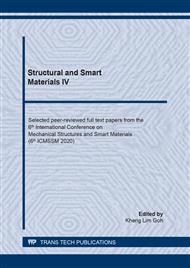p.3
p.8
p.13
p.23
p.32
p.41
p.49
p.55
Study on Linear Segregation of ZL205A Alloy
Abstract:
Linear segregation of high strength aluminum alloy ZL205A castings were studied by X-ray Nondestructive testing, scanning electron microscope and energy dispersive spectrometer. It is found that the linear segregation occurs at the large wall thickness of the casting and/or at the place where the wall thickness is in transition. Segregation element is mainly Cu, which exists as compound θ (Al2Cu) phase. The formation of linear segregation is related to the flow of Cu-rich melt in the late solidification period, while the occurrence of thermal cracks promotes the formation of linear segregation. The formation of linear segregation of the casting can be effectively prevented by eliminating hot spots of the casting, refining crystal grains and increasing solidification speed of the casting.
Info:
Periodical:
Pages:
8-12
Citation:
Online since:
February 2021
Authors:
Keywords:
Price:
Сopyright:
© 2021 Trans Tech Publications Ltd. All Rights Reserved
Share:
Citation:


